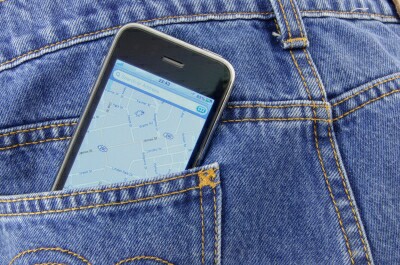The Future of Retail Is In Your Pocket – Dan Hodges

The smartphone is used today as a shopping resource by a majority of consumers. The change in consumer behavior brought on by smartphones has outstripped the retailer’s ability to keep up with changing shopping habits. This will be further affected by technological changes yet to come.
All segments of retail -- from discount to luxury and from online to bricks and mortar -- are affected by the smartphone. We are moving from a fixed location-shopping world to an omni-point shopping world. In this world, shoppers are able to buy anytime on their mobile phone when they see a product, whether it is on television, mobile, social media or on the street. If retailers want to adapt to what seems like an endless cycle of disruption, the first thing they ought to do is accept that retail has forever changed.
After a slow start, consumers are embracing smartphones and are increasingly using their mobile devices to bridge the online and offline worlds. They are using smartphones to look up product information, run price comparisons and even make purchases while window-shopping or in a store. In many cases, consumers are using brick and mortar retailers as showrooms to evaluate products that they then buy from online retailers. Between Thanksgiving and Christmas, nearly 70% of Americans use their mobile devices to look up information while in retail stores, according to a customer experience analytics firm ForeSee.
Savvy retailers are using mobile to understand and influence the entire path to purchase. Online retailer eBay now sells more than $20 billion in merchandise via its mobile platform. The future of shopping, says its chief product officer R.J. Pittman, "is all about mobile.”
Understanding the consumer’s journey from the planning phase to the shopping trip will provide real world insights. The key to maximizing revenue in the age of the mobile shopper is to understand consumer behavior. There are six stages in the path to purchase in the consumer journey:
• Planning -- the process of gathering shopping information.
• Shopping travel -- the process of getting to the store.
• In store -- the shopping experience while in the store.
• The buying experience -- the check-out.
• Post-buy transaction -- the opportunity to up sell and cross sell.
• Return travel -- the return-shopping trip.
• Planning: 60% of UK and American smartphone owners surveyed by research firm Latitude said that they are spurred to shop or make a purchase at least once a week because they’ve received a mobile alert (e.g., an email, text message, notification, etc.) from a brand or retailer. Latitude found that these alerts work best when they are location-based and related to a product or service the consumer has professed an interest in. Similarly, trials of mobile commerce services in France demonstrate that consumers will only adopt a new mobile shopping solution if it is easy to use and offers a seamless experience across multiple channels.
• Shopping Travel: Ideally, an individual should be able to easily use their mobile phone to plan their entire trip, including finding parking and restaurants nearby.
• In-store: A mobile service that gives significant rewards to consumers encourages loyalty, helps them get the best possible deal, and takes into account their shopping preferences is likely to be successful. Safeway’s “Just for U” program offers coupons and other deals that are specifically tailored to each customer's specific shopping habits. It is a big success, according to Safeway.
• The buying process: Pilots are already underway that eliminate the need for check-out lines. Giant’s in-store handheld scanner technology offers incentives to shoppers who scan and buy their own purchases in the aisle.
• Post-buy transaction: Retailers are extending tools that integrate payment, couponing and loyalty into their applications to incentivize shoppers for their next shopping trip.
• Return travel: Most people continue to drive to stores, making easy access to car parking an important part of the shopping experience. According to parking specialist Skidata, 25% of all travel time is used to find a parking space and 50% of all congestion is caused by traffic looking for parking. Parking is, therefore, a key service enabler for retail. Providing pre-paid parking vouchers and reserved parking could be an innovative way to attract and retain customers.
In closing, understanding and maximizing each step of the consumer journey is a key part of the future of retail. Consumers who can customize their retail experiences will reward businesses with their loyalty and continued patronage.
Image at top courtesy of freedigitalphotos.net.
Dan Hodges is CEO and Founder, Consumers in Motion LLC. He can be reached at dan@consumersinmotion.com
dan@consumersinmotion.com
Read all Dan's MediaBizBloggers commentaries at MediaBizBloggers Guest Blog.
Check us out on Facebook at MediaBizBloggers.com
Follow our Twitter updates at @MediaBizBlogger
The opinions and points of view expressed in this commentary are exclusively the views of the author and do not necessarily represent the views of MediaBizBloggers.com management or associated bloggers. MediaBizBloggers is an open thought leadership platform and readers may share their comments and opinions in response to all commentaries.


